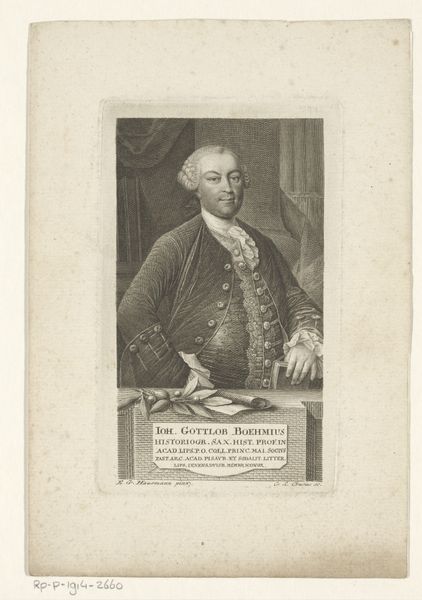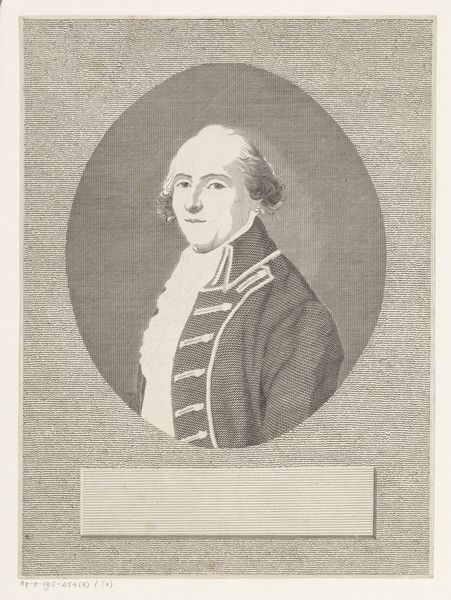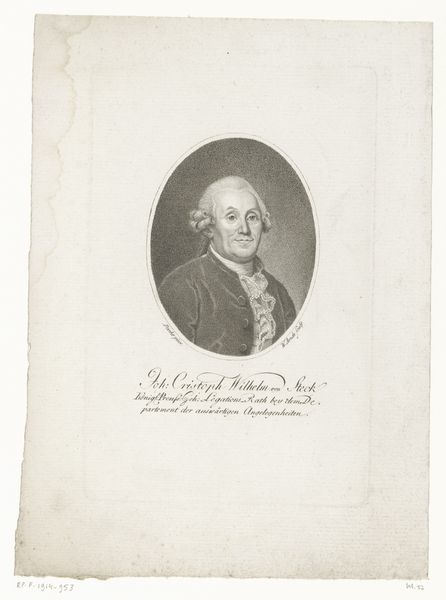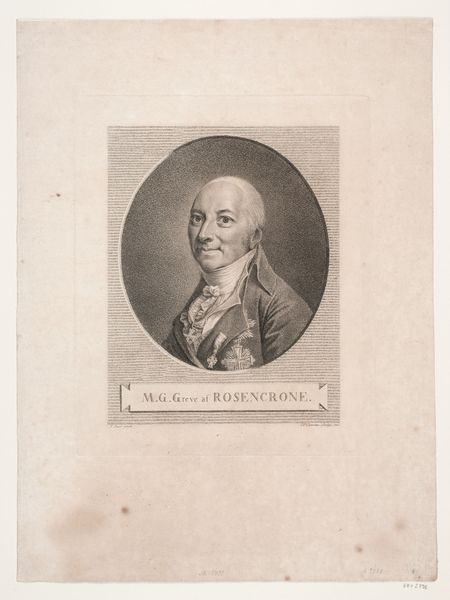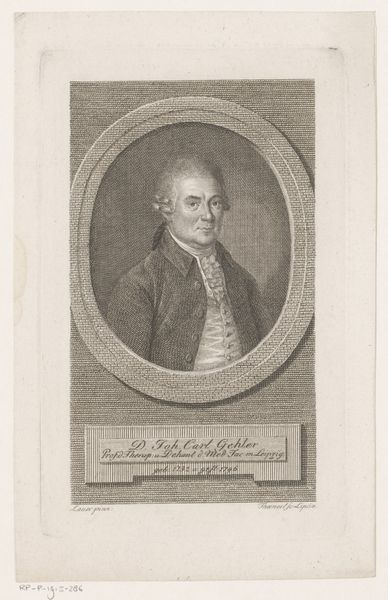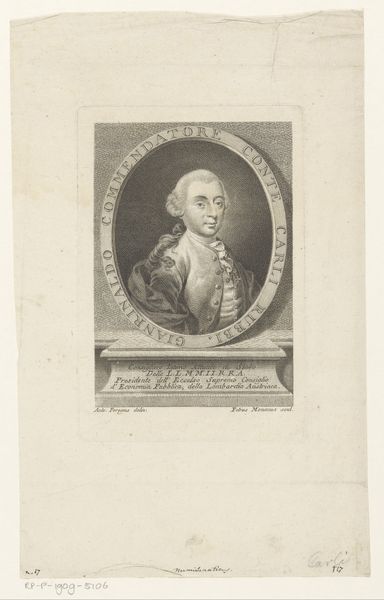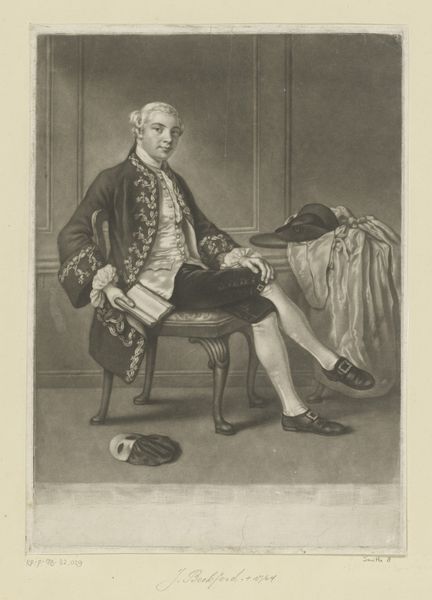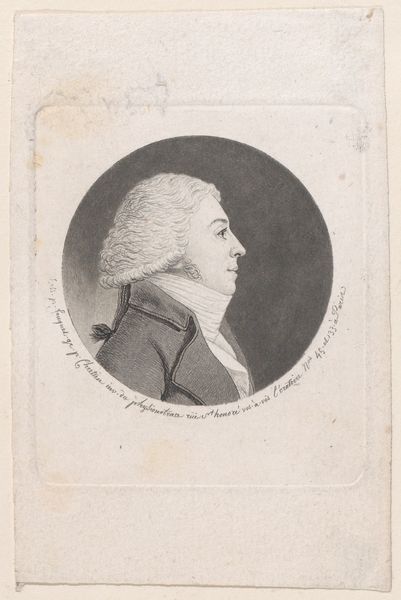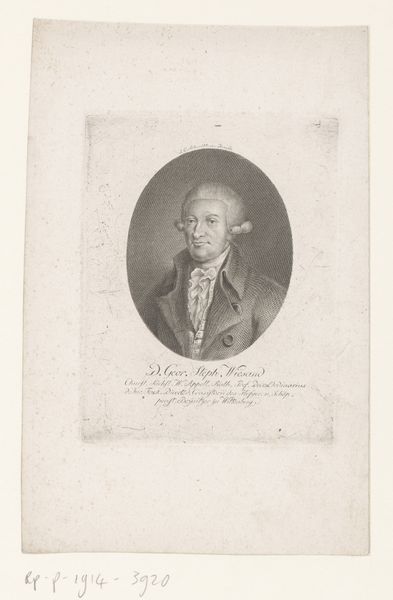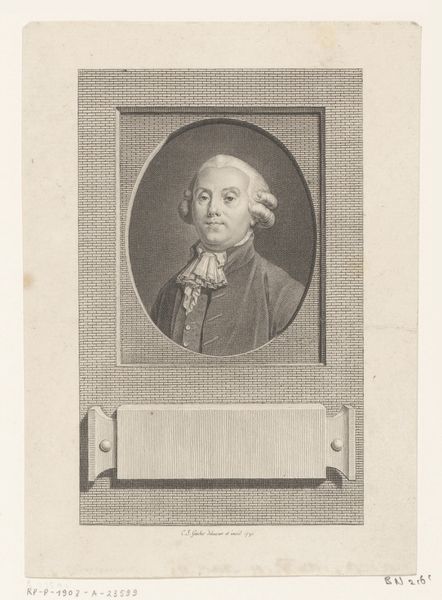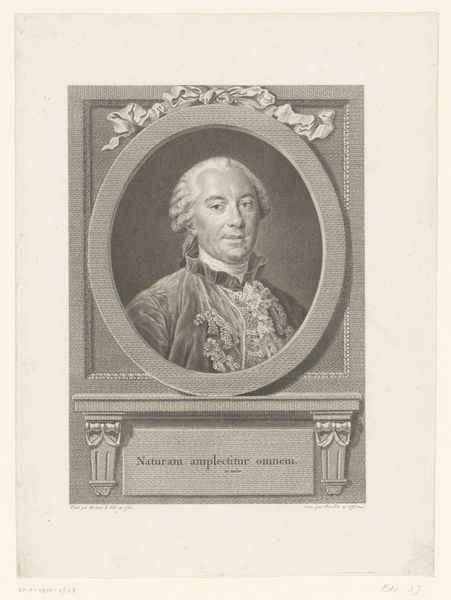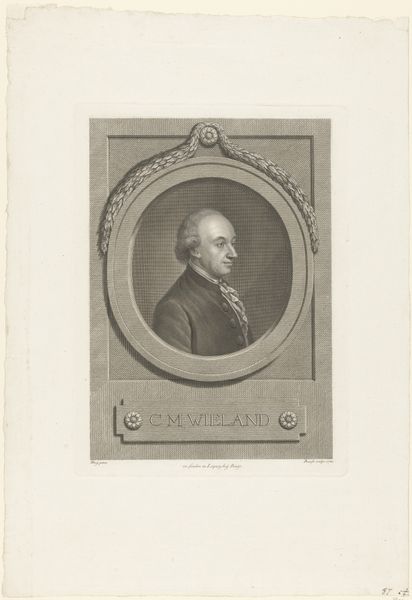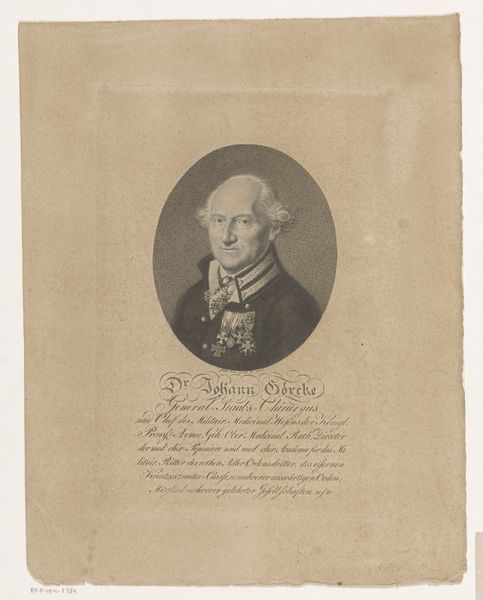
paper, engraving
#
portrait
#
baroque
#
old engraving style
#
paper
#
engraving
Dimensions: height 154 mm, width 94 mm
Copyright: Rijks Museum: Open Domain
Editor: So, this is "Portret van Johann Gottlob Böhme" from between 1740 and 1780, engraved on paper by Gottlieb Leberecht Crusius, currently held in the Rijksmuseum. It strikes me as very formal and composed, almost like a carefully staged performance of power. What’s your take on it? Curator: Well, considering the period, these portraits functioned as tools of social and political assertion. Look at the composition – the subject is presented as learned and respectable, indicated by his clothing, the book in his hand, and the setting, which suggests access to knowledge and wealth. This isn't just about capturing a likeness, it is crafting a persona. What public role do you think Böhme might have had, based on this portrayal? Editor: Given the book, perhaps an academic or religious figure? But the luxurious clothing suggests someone of considerable financial means too. So, how does this particular portrait fit into the broader context of portraiture during this time? Was this level of formality typical? Curator: Absolutely. In the 18th century, portraiture became a vital medium for the elite to project an image of stability and authority. Engravings like this one also allowed for wider circulation of these images, expanding their political and social impact. What’s interesting is how the print medium itself contributed to a sense of accessibility, bringing the image of the powerful to a broader audience, even if indirectly. Editor: So it's less about individual artistry, and more about a social narrative being carefully constructed and distributed? Curator: Exactly. It underscores the role of art as a social document and tool, rather than purely aesthetic expression. How does viewing it that way change your understanding of its purpose? Editor: It definitely makes me think more critically about who gets represented and what that representation says about societal values and power structures. Thanks! Curator: Indeed, reflecting on the social function of images encourages a more nuanced appreciation of art's lasting impact.
Comments
No comments
Be the first to comment and join the conversation on the ultimate creative platform.
